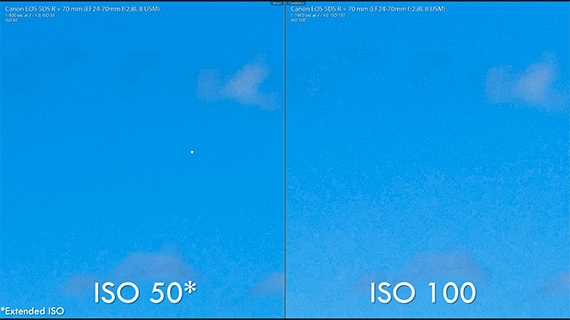You’ve probably heard that extended ISO isn’t recommended. After all, what the camera does at the extended ISO (lower) is make a software based adjustment of the image shot at the lowest base ISO. Most cameras have a low base ISO of 100 or 200. When you shoot at the extended ISO all that the camera does is record the exact same exposure, but it adds software adjustment. Basically, it will seem like a wasted effort and in the worst case scenario, a loss in dynamic range in the highlights. So, why do that? Tony Northrup explains:
Look closely and you’re likely to see that extended ISO comes in handy, especially when you talk about reducing noise in your images. You can actually reduce the noise in your images by a full stop when you shoot with the extended ISO of your camera. Isn’t that something to be excited about?
If you share your images on Instagram or Facebook, this difference may not be too obvious. But, if you like to print large, that extra stop of noise reduction without having done any post-processing could be a big bonus.

Northrup demonstrates this by showing a side by side comparison of two images. One was shot using the base ISO of 100 and the other one was shot using the extended ISO of 50. The ISO 50 image shows less noise. Just about half of what you can see on the ISO 100 image.
YouTube compression does hide some of that noise. However a contrast boosted image shows that the difference is quite obvious. The ISO 50 image is a good deal cleaner than the ISO 100 image.
For images shot at the extended ISO, when the exposures are increased to test the dynamic range in the shadow area, even then the amount of noise seems to be much lower than that on the comparative ISO 100 images.
But just like everything else there’s a flip side. Images shot at extended ISO will lose dynamic range in the heavily overexposed highlights. It’s important to check the histogram and areas that are clipped.
Another thing to note. When you clip your highlights by raising the exposure, you’re also increasing the exposure on the shadows. In other words, while trying to gain a stop of exposure in the shadows and therefore dynamic range, you’re losing dynamic range in the highlights. For some photographers that’s a problem. For others, it’s no big deal.
Go to full article: Extended ISO: When to Use It and Why
What are your thoughts on this article? Join the discussion on Facebook
PictureCorrect subscribers can also learn more today with our #1 bestseller: The Photography Tutorial eBook
The post Extended ISO: When to Use It and Why appeared first on PictureCorrect.
from PictureCorrect http://bit.ly/2jpXBSp
via IFTTT






0 kommenttia:
Lähetä kommentti